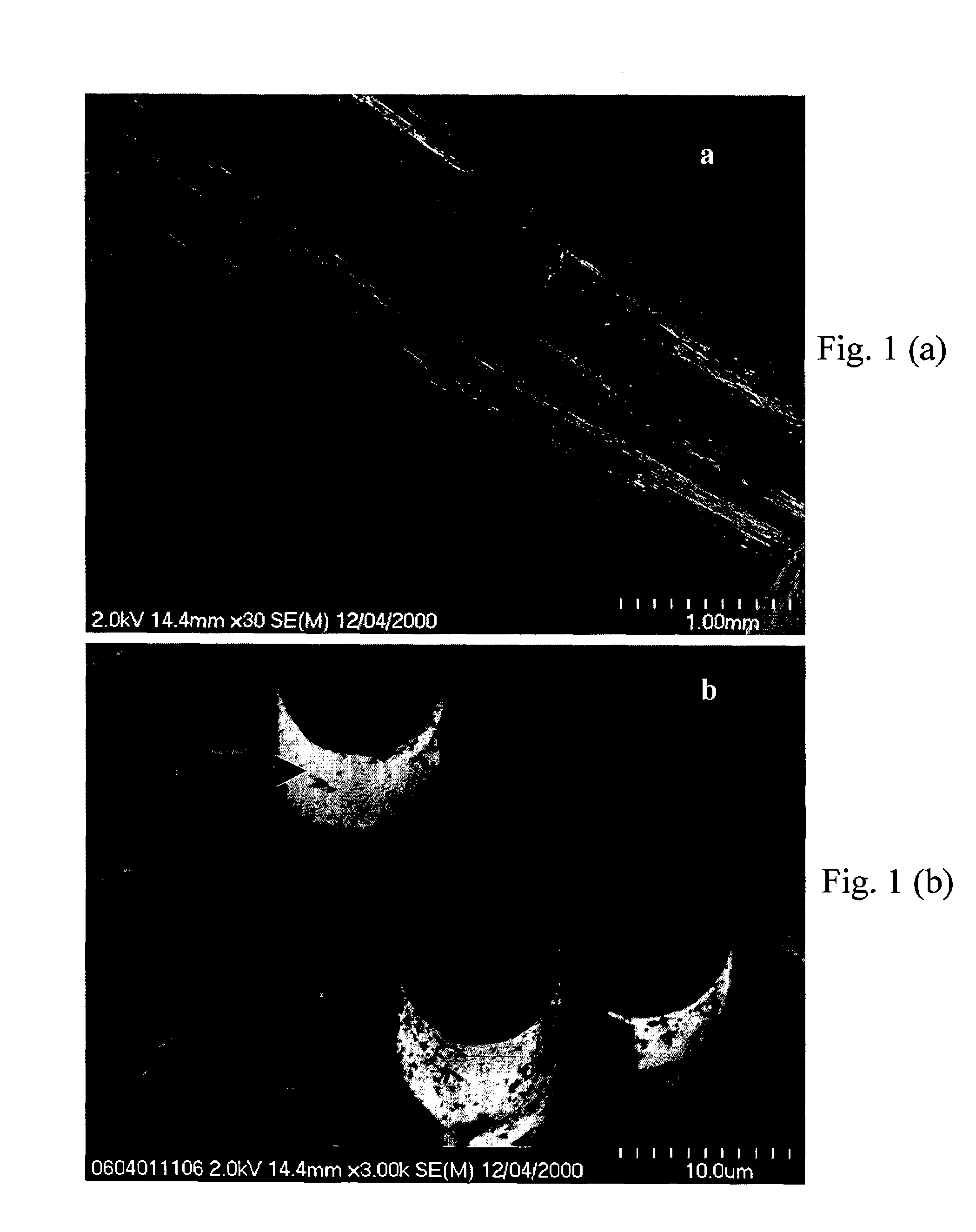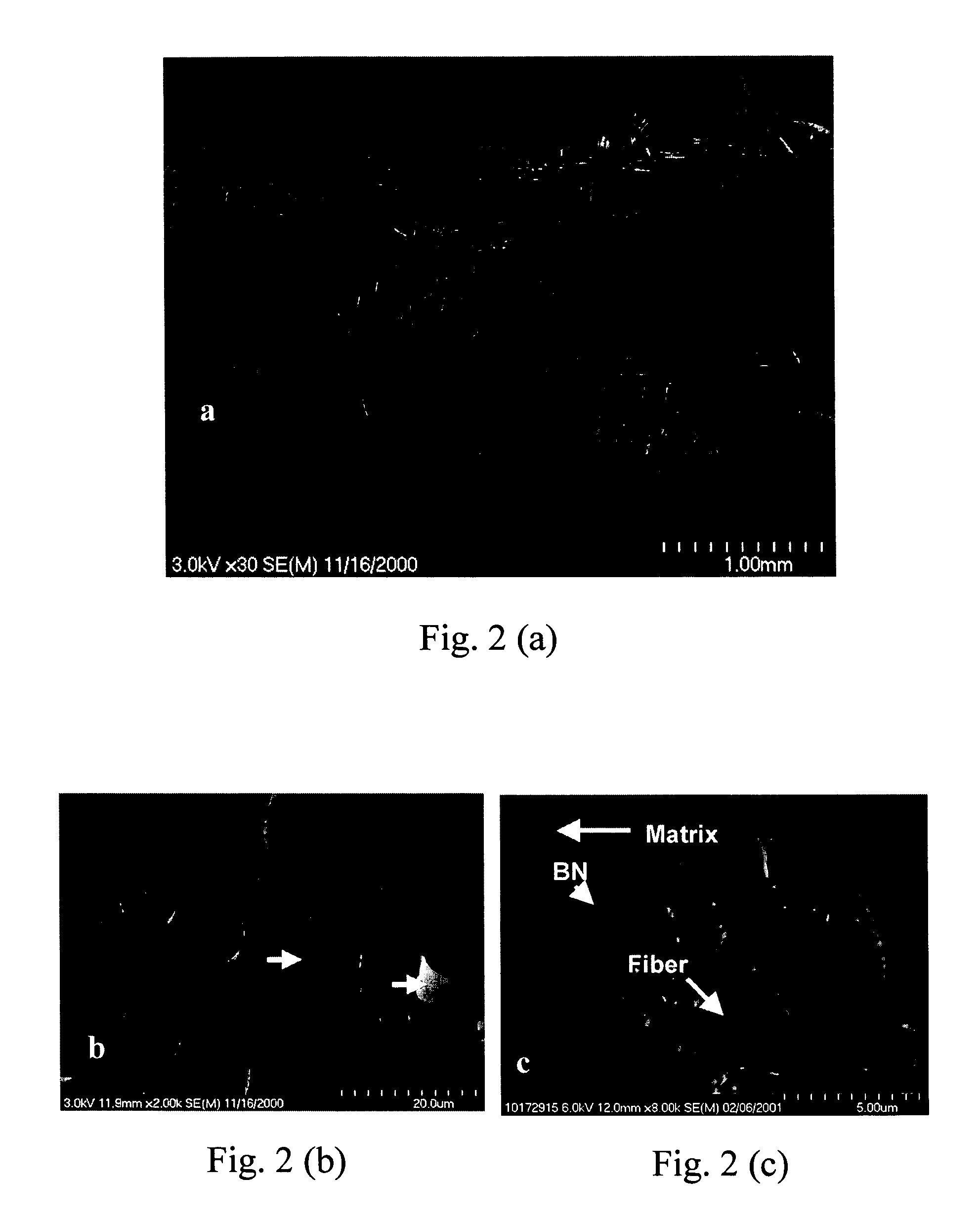Interphase for ceramic matrix composites reinforced by non-oxide ceramic fibers
a ceramic fiber and interphase technology, applied in the field of ceramic materials, can solve the problems of reducing the ability of each fiber to act independently, reducing the oxid reducing the oxidative impact so as to improve the oxidative durability of ceramic matrix composite materials, high composite strength, and reliable and more cost-effective
- Summary
- Abstract
- Description
- Claims
- Application Information
AI Technical Summary
Benefits of technology
Problems solved by technology
Method used
Image
Examples
embodiment b
nding during composite processing due to thermally induced densification and contraction of the interphase
[0032]BN interphase deposition typically occurs at a temperature lower than the temperature typically employed for CVI SiC matrix formation (˜1000° C.), which in turn is lower than the maximum production temperatures for some near-stoichiometric SiC fiber types (>1600° C.). Thus, by exposing the BN interphase to CVI SiC process temperatures and even higher, significant shrinkage (sintering or densification) of the BN will occur due to crystallization and grain growth of the BN, but the microstructures of the near stoichiometric SiC fibers will remain stable. When this happens, the BN typically shrinks towards the fibers, thereby developing a tensile residual stress between the BN coating and CVI SiC matrix. Since the heat-treatment temperature controls the BN shrinkage, this innovation proposes to use temperatures high enough to create a sufficiently high tensile stress to cause...
PUM
| Property | Measurement | Unit |
|---|---|---|
| temperatures | aaaaa | aaaaa |
| temperatures | aaaaa | aaaaa |
| temperatures | aaaaa | aaaaa |
Abstract
Description
Claims
Application Information
 Login to View More
Login to View More - R&D
- Intellectual Property
- Life Sciences
- Materials
- Tech Scout
- Unparalleled Data Quality
- Higher Quality Content
- 60% Fewer Hallucinations
Browse by: Latest US Patents, China's latest patents, Technical Efficacy Thesaurus, Application Domain, Technology Topic, Popular Technical Reports.
© 2025 PatSnap. All rights reserved.Legal|Privacy policy|Modern Slavery Act Transparency Statement|Sitemap|About US| Contact US: help@patsnap.com



